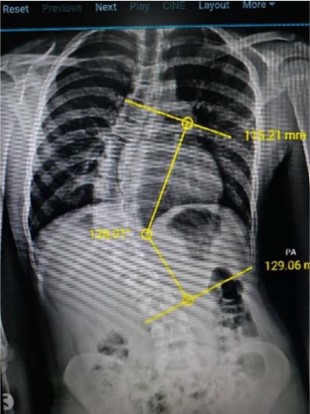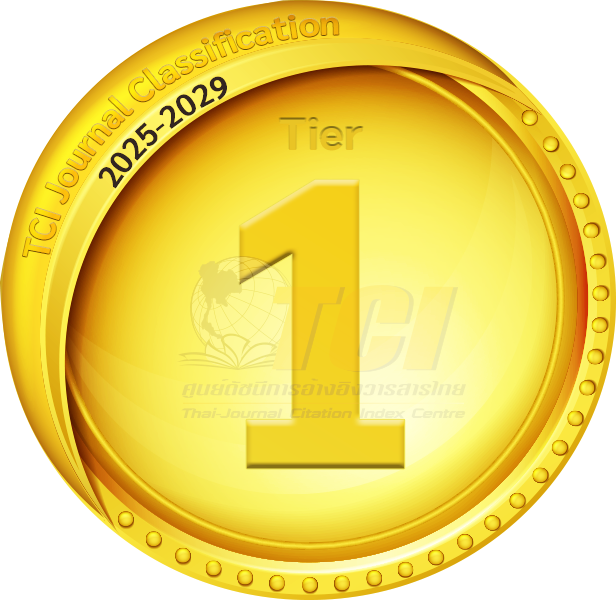COMPARISON OF THE COBB ANGLE MEASUREMENT BETWEEN MANUAL AND DIGITAL METHODS AMONG FIVE MILITARY HOSPITALS
DOI:
https://doi.org/10.55374/jseamed.v5i2.88Keywords:
Scoliosis, Cobb angle, Manual measurement, Digital measurementAbstract
Background: The Cobb angle measurement of the spine is an important parameter for assessing patients with scoliosis in terms of diagnosis, treatment planning, follow-up for severity and disease progression. This angle can be obtained from a plain X-ray film in an upright posteroanterior view or can be measured from digital images. A 5° curve progression is considered clinically significant.
Objective: This study aimed to compare the accuracy and difference of the Cobb angle measurements between manual and digital methods among 5 military hospitals located in the 1st area of command having orthopedic services and using different Picture Archiving and Communication (PACS).
Methods: Using plain X- ray films of patients diagnosed with scoliosis, a comparative study of the Cobb angle measurement was conducted. A total of 120 images were recorded in a compact disc in the Digital Imaging and Communications in Medicine (DICOM) system and was used to install in computer systems of 5 military hospitals (Hospitals A, B, C, D, and E), and then was interpreted using each hospital digital PACS. The mean difference of 5° is considered clinically significant. The validity of measurements was analyzed using paired t- test for the mean equivalence. The reliability of one time measurement was also performed using Intraclass Correlation Coefficient (ICC).
Results: Both one time and an average of three times of digital measurements among Hospitals A, B, C, D and E revealed significant differences when compared with the manual measurement (p < 0.01). However, no clinical significance of both one time and the averaged three measurements were observed when the mean difference was less than 5°. In the combined process group (Hospitals C, D and E), a significant difference of the manual and digital measurements was observed (p<0.01). However, no clinical significance using both one time and averaged three time measurements was found when the mean difference was less than 5°. The data of one time digital measurements were reliable (ICC= 0.9).
Conclusion: The use of digital Cobb angle measurement is a convenient practice. A significant difference using manual and digital methods was found using both one and combined processes; however, no clinical significance was observed. One time digital measurement revealed validity as those found in three time averaged measurements.
Downloads
Metrics
References
Brian W, Joshua A. Comparison of Cobb angle measurement of scoliosis radiographs with preselected end vertebrae : traditional versus digital acquisition. Spine 2007: 98-105 DOI: https://doi.org/10.1097/01.brs.0000251086.84420.d1
Tanure MC, Pinheiro AP, Oliviera AS. Reliability assessment of Cobb angle measurement using manual and digital methods. Spine J 2010; 10: 769-7 DOI: https://doi.org/10.1016/j.spinee.2010.02.020
Vrtovec T, Pernus F, Likar B. A review of method for quantitative evaluation of spinal curvature. Eur Spine J 2009; 18: 593-607 DOI: https://doi.org/10.1007/s00586-009-0913-0
Shea KG, Steven PM, Nelson M, Smith JT, Masters KS, Yandow S. A comparison of manual versus computer-assisted radiographic measurement: intraobserver measurement variability for Cobb angle. Spine 1998; 23: 551-5 DOI: https://doi.org/10.1097/00007632-199803010-00007
Ricart PA, Andres TM, Apacidis A. Validity of Cobb angle measurements using digitally photographed radiographs. Spine J 2011; 11: 942-46. DOI: https://doi.org/10.1016/j.spinee.2011.09.003
Chockalingham N, Dangerfield PH , Giakas G, Cochrane T, Dorgan JC. Computer assisted Cobb measurement of scoliosis. Eur Spine J 2002; 11: 353-7. DOI: https://doi.org/10.1007/s00586-002-0386-x
Bunnell WP. Selective screening for scoliosis. Clin Orthop Relat Res 2005; 434: 40-45 DOI: https://doi.org/10.1097/01.blo.0000163242.92733.66

Downloads
Published
How to Cite
Issue
Section
License
The Journal of Southeast Asian Medical Research will hold the copyright to all published articles. The publisher's production department handles copyright forms once a manuscript is accepted and scheduled for publication.







